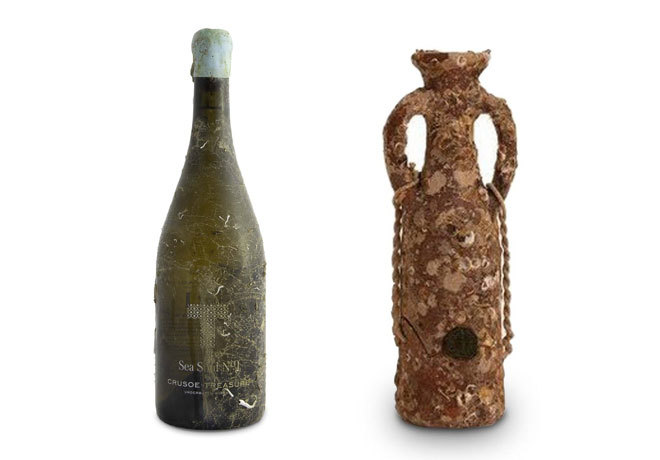Aged in the depths of the Bay of Biscay, the Arosa estuary or the Bay of Cádiz, wines raised at the bottom of the sea are an eccentricity in the Spanish oenological landscape
Even though many do not abandon their skepticism regarding underwater aging wines , the market continues to make room for those wine growers who have been determined to ripen their cuvées in the depths of the sea. The inspired underwater winemakers believe that the ideal conditions of temperature, light and pressure for the aging of their wines occur in the aquatic environment. They also argue that near the seabed, they mature much faster than on land.
Although there is still no scientific evidence to support it, the wineries that are committed to this unique aging or ensure that the factors that favor this type of aging are four: constant pressure and temperature (around 14 degrees); salinity; absence of light and noise and the smooth and constant movement of the waves.
In cages
A matter of faith or not, the truth is that in the objective tasting, wines that have rested months at sea have an early maturity , but no less harmonious. The issue of salinity, on the other hand, is rather a suggestion, because the bottles that enter the waters - in well-protected cages - are sealed with sealing wax, since salt water filtration would be completely pernicious. Therefore, many of the underwater references also use glass plugs, more hermetic than those of cork.
The last winery to join this trend has been, of course, Extremadura speaks, always ready to sign up for all fashions and eccentricities. However, contrary to what most of the marine wine growers do, this company does not raise its underwater wine in the bottle, but in tanks of 300 liters, 15 meters deep, in the bay of San Juan de Luz, locality Atlantic of southern France. Maybe that's why Habla del Mar (24 euros) has a less differentiated character compared to other wines of the sea.
Another of its singularities is the absence of vintage - which is why it is deduced that it is a mixture of several crops - while the raw material used is a secret that they reserve for themselves. "We use selected Atlantic varieties from different coastal vineyards according to the criteria of their maximum adaptation and suitability for the pressure and temperature conditions of the immersion process", is the official explanation of Habla.
Most obviously marine is Attis Mar 2016 (68 euros), Albariño that the Fariña brothers immerse for six months in their own mussels bat in the Arosa estuary, 12 meters deep. Previously matured for another six months with its lees in stainless steel tanks, the most eccentric white of this young Rías Baixas winery emerges from the sea with the bottle covered with barnacles and mollusks and has a fine character and no less emphatic, unctuous, fresh, floral ... and markedly saline (although this last characteristic is due rather to the proximity of the vineyards with the Atlantic).
In bottle and amphora
Along with these developments, the company that continues to lead the development of such references with underwater breeding is Crusoe Treasure, based in the Bay of Plentzia (Vizcaya). This company began its research on breeding on the seabed in 2009 and today has three wine lines: Sea Soul - with a white of Albariño (Sea Soul N0 1; 59 euros) and a fine ink red (Sea Soul N0 3; 62), among other varieties-, Sea Passion - with a red of fine ink and another of Tempranillo and Maturana - and Sea Legend , the most exclusive line, whose viognier white is still submerged.
More radical than all of them is, without a doubt, the Underwater Garum (248 euros) that the Luis Pérez gaditanas wineries produce with the Rota tintilla variety that, after maturing 16 months in oak barrels, is introduced into clay amphorae for later breeding on the seabed, for 12 months, at 12 meters deep. The image of the clay vessel plagued with barnacles, seaweed and mollusc remains resembles more an archeological find than a wine made in the 21st century.
According to the criteria of
Know more
Comments
This news has no comments yet
Be the first in give your opinion
0 comments
